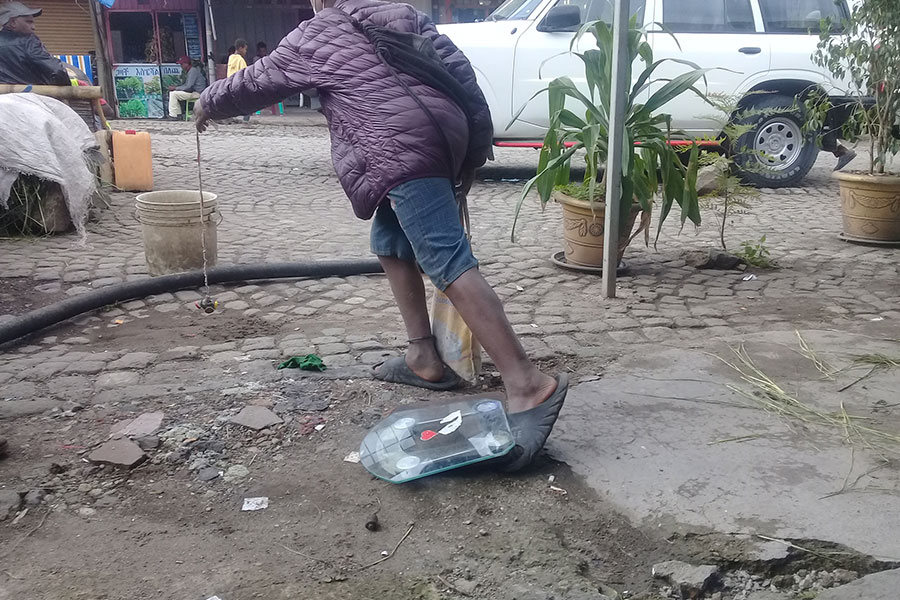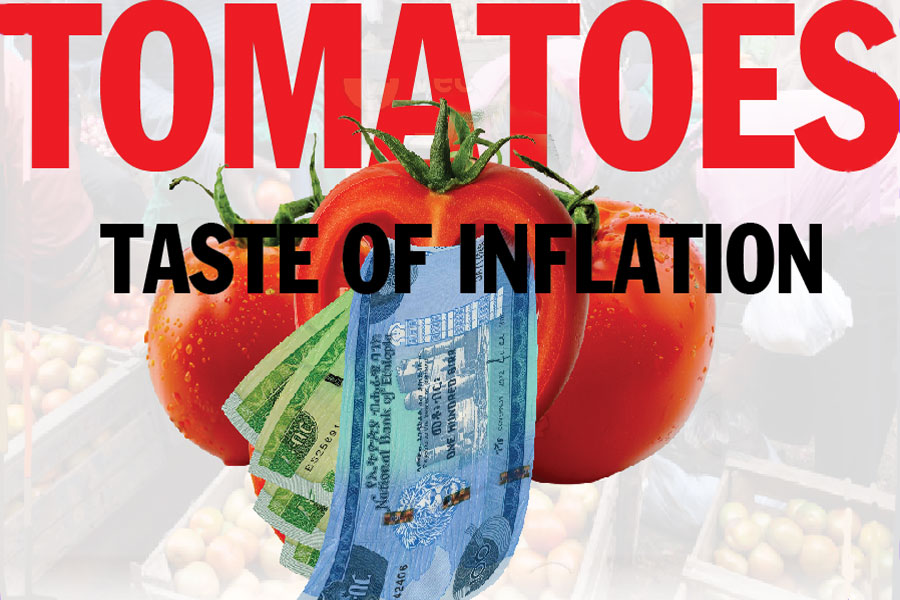
Radar | Apr 03,2023
Jan 5 , 2019
By Haimanot Tefera
More than halfway along on its ambitious 2025 vision to achieve lower middle-income status, Ethiopia should be deep in the implementation of the Climate Resilient Green Economy‘s priority initiatives, writes Haimanot Tefera (h.tefera@hotmail.com), an environmental engineer and project manager at GIZ.
The climate is hot these days. December saw COP24 further cement the 2015 Paris agreement and in October, a dire climate report by the Intergovernmental Panel on Climate Change (IPCC) predicted the least developed countries will pay the highest price for the climate.
With mounting attention on the consequences of climate inaction, is Ethiopia progressing on its Climate Resilient Green Economy (CRGE) targets?
Arguably, even in environmental circles, the CRGE has long made its quiet way off the stage and into the dark halls of our collective memory. A refresher thus is necessary. Finalized in November 2011, the CRGE strategy is an inter-ministerial plan to leapfrog traditional Western growth and implement climate-friendly development models instead.
It aims to ensure Ethiopia’s dramatic economic performance is accompanied by the long-term health and wealth of citizens, animals and the environment. The ultimate goal is to sustainably reach lower middle-income status by 2025.
The CRGE strategy prioritises four sectors improving crop and livestock practices for higher food security and farmer incomes while reducing emissions; protecting and re-establishing forests for their economic and ecosystem services, including as carbon stocks; expanding electricity generation from renewable sources of energy for domestic and regional markets; and leapfrogging to modern and energy-efficient technologies in transport, the industrial sector and buildings.
These sectors were chosen to yield high economic and environmental benefits over the long run. A further 60 initiatives were also prioritised in the strategy but with fewer details.
The strategy was also to form the “iPlan” to develop green investment plans, build a “multi-donor trust fund” known as the CRGE Facility and create a monitoring, reporting and verification system for accountability and visibility.
There are arguments that the true colour of the strategy, however, may be less “nature” green and more US-dollar green. By its own estimates, 150 billion dollars would be needed over two decades for the CRGE alone and a further 50 billion dollars for the Growth & Transformation Plan (GTP) infrastructure investment, this in the form of climate grants and loans from the usual suspects - the World Bank, UN, bilateral agencies.
The CRGE may therefore be nothing more than a country-level funding proposal to tick the boxes of donor organisations - who also need to reach their spending targets. If there was genuine desire for green-growth, it could be said to have been obscured.
Putting aside readings under the surface though, how has Ethiopia’s performance been?
The goal was to sustainably attain lower middle-income status by reaching 1,000 dollars in GDP per capita by 2025. Since it stood under 385 dollars in 2011, the CRGE target of middle-income status in just fourteen years seemed like another overly ambitious Ethiopian government scheme. Just in the past fiscal year though, Ethiopia reached 883 dollars per capita, according to a report by the Planning & Development Commission.
Lower middle-income status may, therefore, not be far-fetched, but was this growth sustainable?
The truth is that comprehensive public reports on the implementation of the CRGE are rare. The only concrete indicators online are from 2015 - three years after the strategy launch. The latest unofficial public newsletter on CRGE initiatives is from May 2014, whose contents indicate that progress, at best, was slow.
Newly available though is the UNDP’s CRGE Facility’s factsheet. It reports on the funds and expenditures from donors on CRGE projects. The report has only one entry from 2017, showing a total of one CRGE project funded by the UNDP, Sweden and Norway on Forest Sector Development in Ethiopia. There were signs of life after all - even if artificially held together by foreign agents. Unfortunately, there are no signs of the iPlan and MRV system.
There is confusion over who is supposed to implement the CRGE. According to the CRGE strategy, implementation was the co-responsibility of the Environmental Protection Agency and the Ministry of Finance.
In 2013, the Ministry of Environment, Forestry & Climate Change was established, though the strategy was not amended to reflect any changes. Both of these organisation have recently undergone restructuring, and today, several independent initiatives concerning natural resource sustainability and climate change mitigation do not receive the necessary amount of coordination from the government.
Whose responsibility should it be to get the CRGE ball rolling again?
None of the new ministerial departments has a monopoly on the environment like the old EPA or the Forestry Ministry, the latter of which was re-established as a commission. The idea may be for different ministries to incorporate environmental directives emanating from the CRGE and GTP II in their initiatives. However, without a clear custodian of the CRGE, the strategy risks fading into complete oblivion, mentioned only vaguely at climate conferences and environmental meetings.
All is not lost though, as the new global push to action on issues of natural resource management and climate change mitigation means new opportunities for countries like Ethiopia to leverage financial and technical support in implementing CRGE initiatives. There are some good ideas the government could backtrack on.
The CRGE needs the Ethiopian government to take responsibility for overseeing, implementing and coordinating the initiatives. With the Forestry Ministry now a commission, perhaps the Planning & Development Commission could take over the role of CRGE custodian.
Even then, accountability to a higher power may still be necessary, maybe to the African Union’s Committee of the African Heads of State & Government on Climate Change or the Africa Adaptation Initiative. Of course, initiatives would also be held accountable to the donors that fund them, but growing our own African capacity to organise and police ourselves would go further in the long-term sustainability of our actions.
One of the stronger recommendations made in the Country Environmental Analysis (CEA) is to have “accessible and high-quality information” to improve environmental management and outcomes.
Data is crucial in ensuring the proper and continuously improving management of projects and funds. All donors, agencies and ultimately the general public should have access to climate and project data to understand what does and does not work in the Ethiopian context. With only one generational shot at saving the planet, we should try to make as few mistakes as possible.
Communication is also key. Tied to data management is the lack of communication and visibility between the various NGOs, international agencies, businesses and government agencies on very similar initiatives. Poor coordination within a sector means duplicated efforts and avoidable mistakes.
Better coordination within the realm of CRGE activities, preferably by the official CRGE custodian, would ensure a streamlining of projects and faster, more meaningful progress. With a centralised platform where new actors can learn about what’s worked, what could be improved and what should never be tried again, stronger environmental partnerships and programs can be designed. Without this, we risk trying to reinvent the wheel each time we want to move forward.
CRGE priorities and targets should also be integrated into policy. The nation’s transformation requires better integration of environmental and sustainability considerations into the country’s policy and institutional frameworks to achieve efficient use of resources that contribute sustainably to economic development, poverty reduction and quality of life. The new administration has the golden opportunity to review, improve and implement environmental policies.
For new returnees to Ethiopia like myself, the GTP II and the CRGE strategy can be quite impressive and I remain encouraged by the vision laid out in these documents. Regardless of the complexities of the reality, now is the time for organizing ourselves into action, not only for attracting funds, nor simply for the environment, but for the Ethiopian people too.
With over 50 million people under the age of 18, the demand for resources and jobs are set to explode over the coming years. Ensuring a strong environment will not only ensure enough resources to support the growing workforce but also create many jobs in the process - an indispensable prerequisite for peace and stability.
PUBLISHED ON
Jan 05,2019 [ VOL
19 , NO
975]


Radar | Apr 03,2023

Radar | Dec 10,2018

Advertorials | Aug 02,2025

My Opinion | Jul 07,2024

Exclusive Interviews | Dec 11,2021

Viewpoints | Dec 02,2023

Radar | Nov 07,2020

Sunday with Eden | Nov 09,2024

Radar | Aug 06,2022

Radar | Aug 07,2025

Photo Gallery | 174001 Views | May 06,2019

Photo Gallery | 164229 Views | Apr 26,2019

Photo Gallery | 154326 Views | Oct 06,2021

My Opinion | 136611 Views | Aug 14,2021
Editorial | Oct 11,2025

Dec 22 , 2024 . By TIZITA SHEWAFERAW
Charged with transforming colossal state-owned enterprises into modern and competitiv...

Aug 18 , 2024 . By AKSAH ITALO
Although predictable Yonas Zerihun's job in the ride-hailing service is not immune to...

Jul 28 , 2024 . By TIZITA SHEWAFERAW
Unhabitual, perhaps too many, Samuel Gebreyohannes, 38, used to occasionally enjoy a couple of beers at breakfast. However, he recently swit...

Jul 13 , 2024 . By AKSAH ITALO
Investors who rely on tractors, trucks, and field vehicles for commuting, transporting commodities, and f...

Oct 11 , 2025
Ladislas Farago, a roving Associated Press (AP) correspondent, arrived in Ethiopia in...

Oct 4 , 2025
Eyob Tekalegn (PhD) had been in the Governor's chair for only weeks when, on Septembe...

Sep 27 , 2025
Four years into an experiment with “shock therapy” in education, the national moo...

Sep 20 , 2025
Getachew Reda's return to the national stage was always going to stir attention. Once...

Oct 12 , 2025
Tomato prices in Addis Abeba have surged to unprecedented levels, with retail stands charging between 85 Br and 140 Br a kilo, nearly triple...

Oct 12 , 2025 . By BEZAWIT HULUAGER
A sweeping change in the vehicle licensing system has tilted the scales in favour of electric vehicle (EV...

Oct 12 , 2025 . By NAHOM AYELE
A simmering dispute between the legal profession and the federal government is nearing a breaking point,...

Oct 12 , 2025 . By NAHOM AYELE
A violent storm that ripped through the flower belt of Bishoftu (Debreziet), 45Km east of the capital, in...